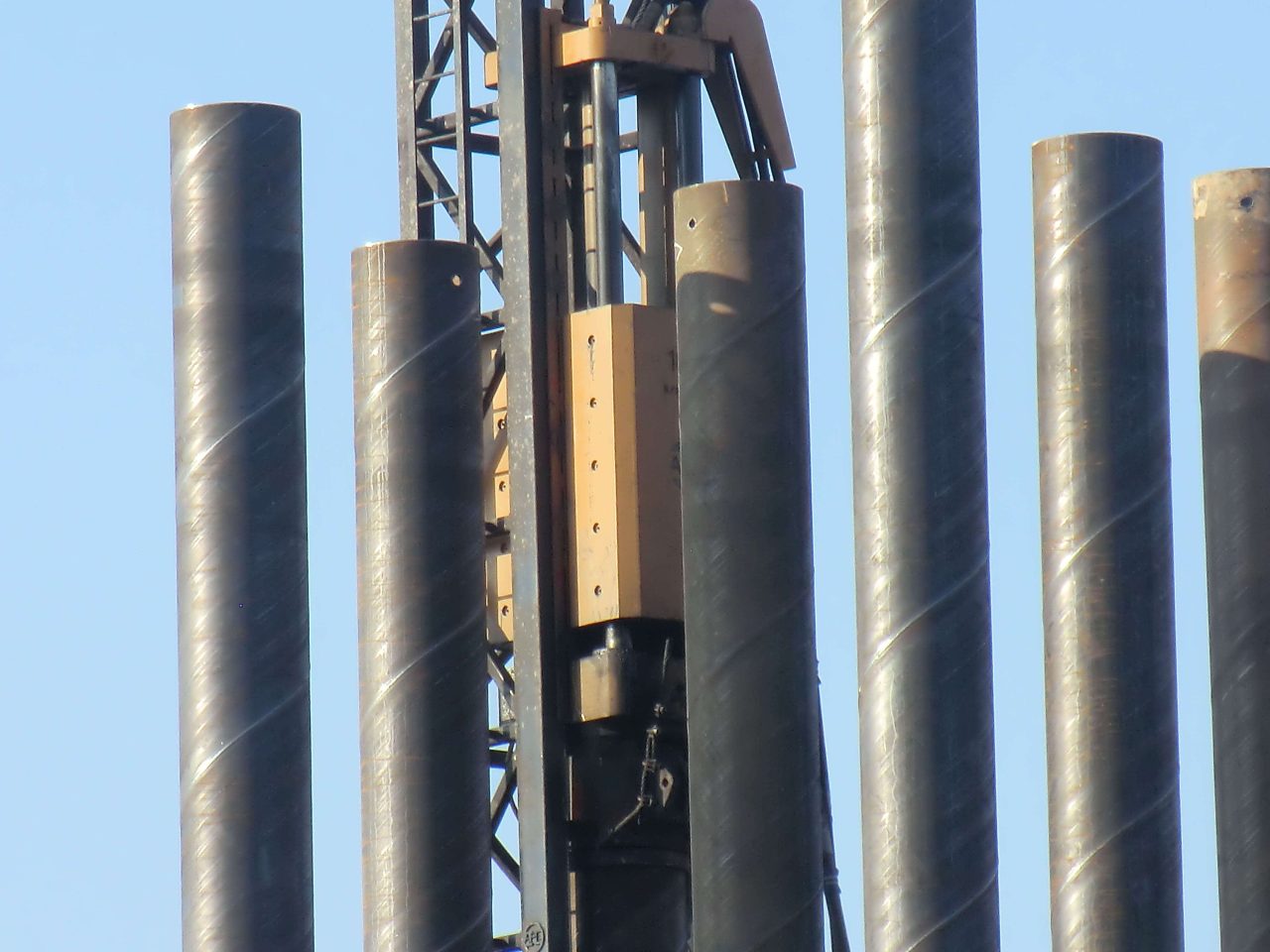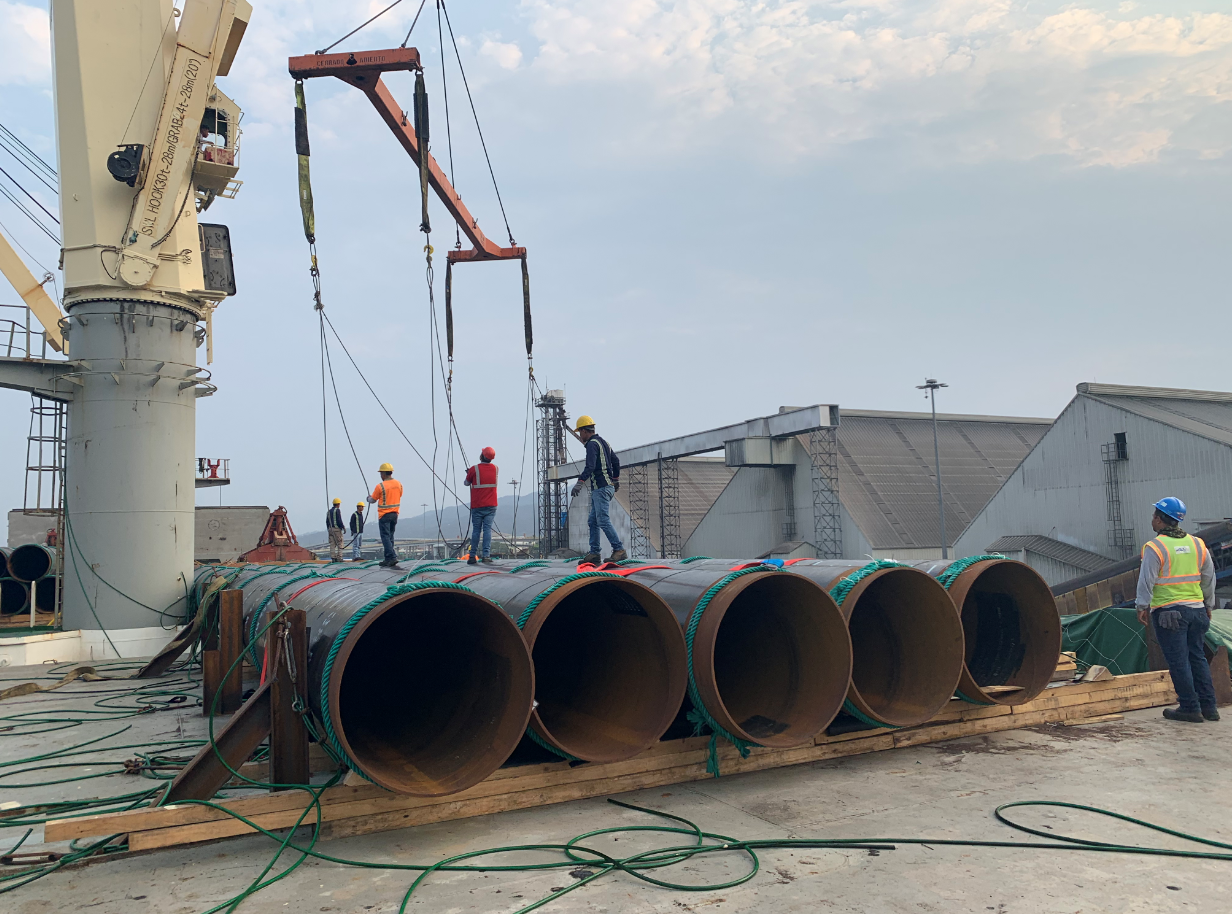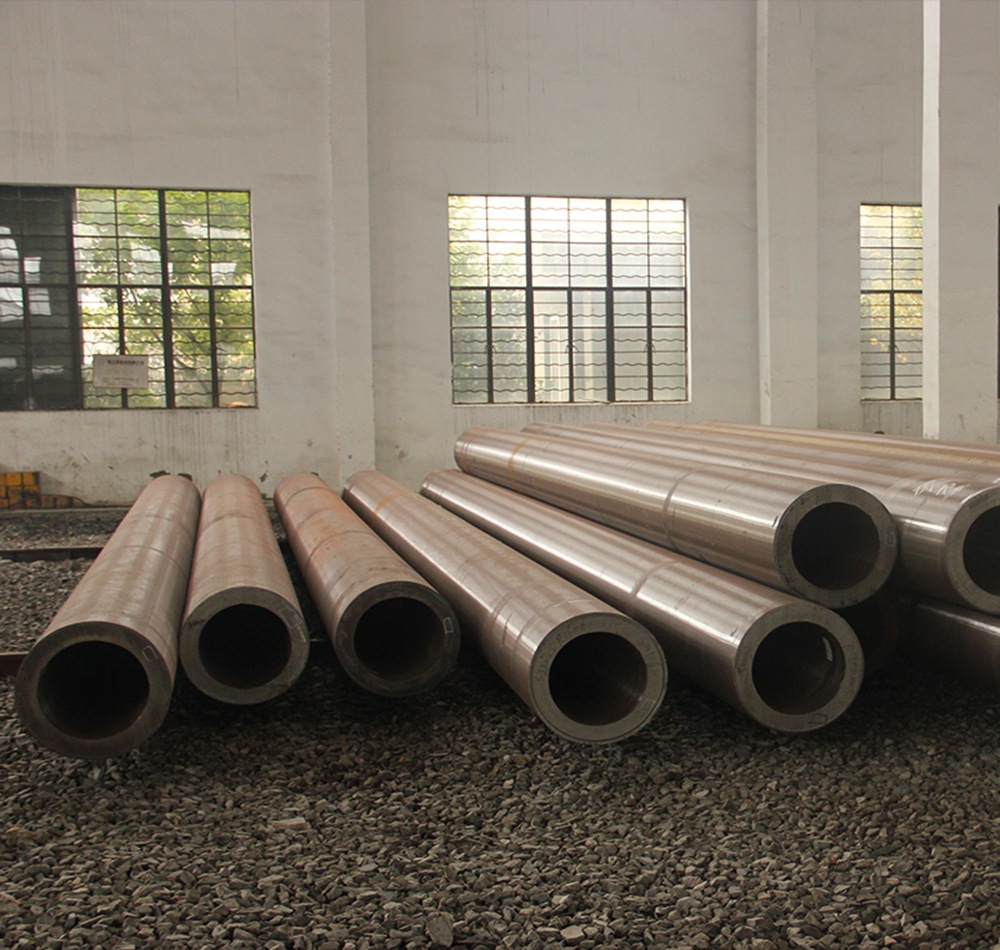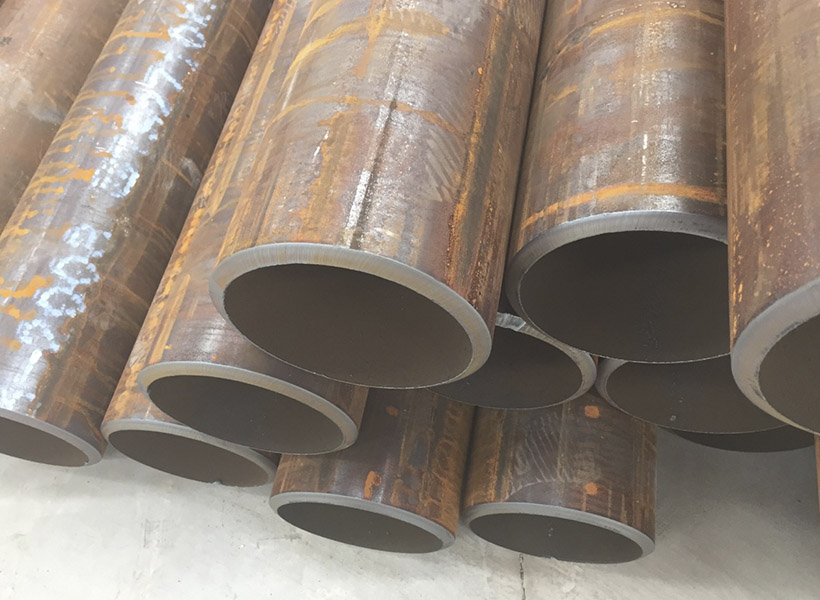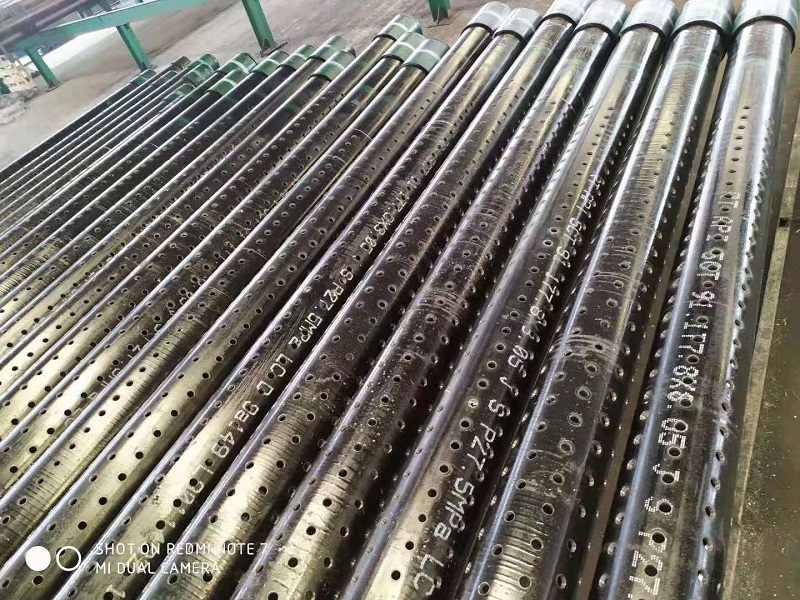Construction of Steel Pipe Piles
The construction of steel pipe piles involves several key steps, ensuring proper installation and structural integrity. Let’s explore each of these steps in detail:
- Site Preparation: Before installing steel pipe piles, the construction site needs to be prepared. This includes clearing the area of any obstructions, such as vegetation or debris. Additionally, the soil conditions are assessed to determine the appropriate type and specifications of steel pipe piles required for the project. Soil testing helps identify any potential challenges or considerations during installation.
- Pile Driving: Pile driving is the process of installing steel pipe piles into the ground. It is typically done using impact hammers or vibratory drivers. The steel pipe piles are carefully aligned and positioned at the designated locations, ensuring proper spacing and alignment for load transfer. The driving process generates vibrations and impacts that help penetrate the soil and achieve the desired depth. The depth at which the piles are driven depends on the design requirements and the load-bearing capacity of the soil.
- Monitoring and Testing: During the pile driving process, it is crucial to monitor and test the piles to ensure proper installation and pile integrity. This includes measuring pile penetration, driving resistance, and pile integrity using techniques such as pile driving analyzer (PDA) testing or pile integrity testing (PIT). These tests provide valuable data on pile performance, ensuring that the piles meet the required standards and specifications.
- Splicing and Connection: In some cases, longer piles are required to reach the desired depth. To achieve the required length, individual steel pipe piles can be spliced together. Splicing can be done using welding or mechanical connections, depending on the project requirements and specifications. The splicing process ensures continuity and structural integrity along the entire length of the pile, enabling efficient load transfer.
- Load Transfer: Once the steel pipe piles are installed, they are ready to transfer the structural loads to the deeper soil layers. The load transfer mechanism may involve various methods, depending on the specific project requirements. This can include pile-to-pile connection, where piles are connected together to distribute the load evenly. Additionally, pile caps or pile-to-structure connections may be used to transfer the load from the piles to the foundation or superstructure.
Throughout the construction of steel pipe piles, it is essential to adhere to industry standards, specifications, and safety regulations. Proper quality control measures should be implemented, including regular inspections, testing, and documentation of the installation process. This helps ensure that the steel pipe piles meet the required standards for load-bearing capacity, durability, and structural integrity.
In conclusion, the construction of steel pipe piles involves site preparation, pile driving, monitoring and testing, splicing and connection, and load transfer. By following these steps and maintaining strict quality control, construction professionals can ensure the successful installation of steel pipe piles, providing reliable deep foundation support for various construction projects.

